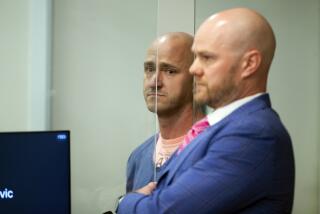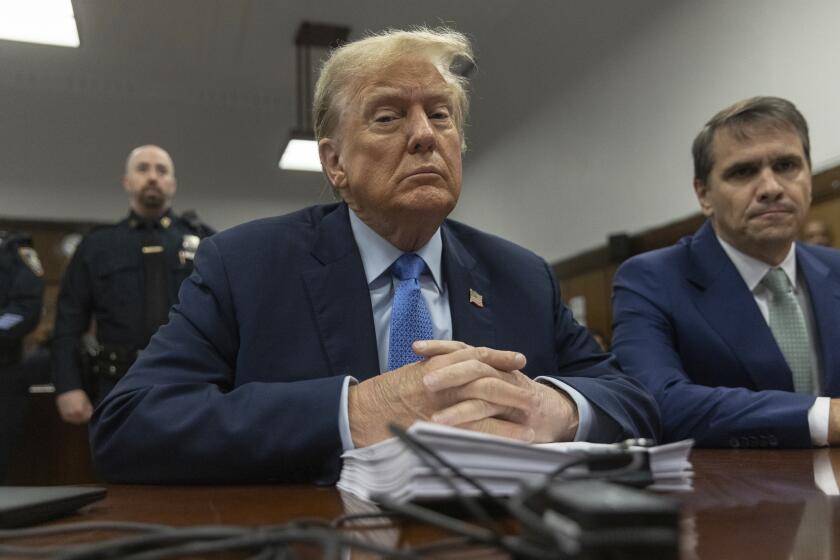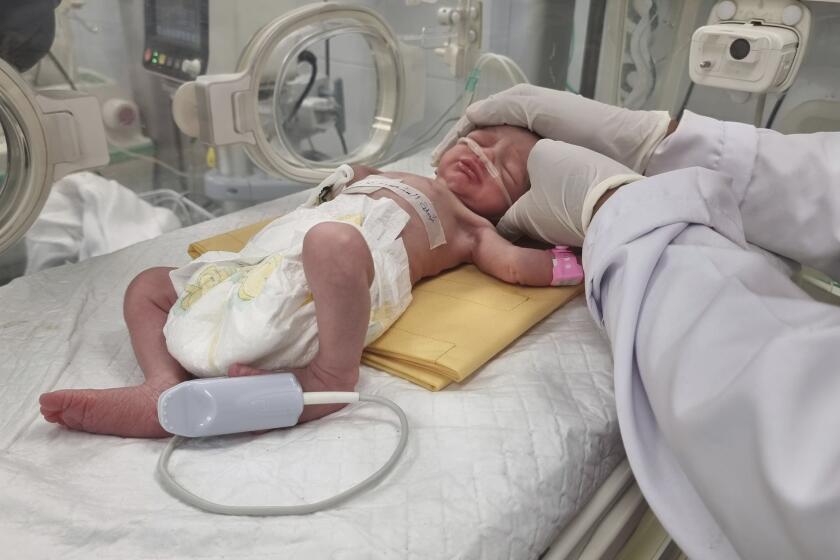Indictment Opens a Door Into Attack Planning
The indictment of Zacarias Moussaoui suggests the FBI has made significant progress tracing the Sept. 11 conspiracy.
The 31-page indictment paints Moussaoui as one of the intended hijackers. It also outlines for the first time in detail how the federal government believes the plot unfolded.
In the process, some intriguing new connections emerge. Among them:
* How another would-be hijacker in Hamburg, Germany, sent money to support the plot.
* A suggestion that conspirators in the Sept. 11 attacks and the foiled millennium bomb attack on Los Angeles International Airport may be connected.
* Evidence that some aspects of the conspiracy may have been plotted in Malaysia.
The document also details how the 19 men who seized and crashed four jetliners received more than $114,000 in financial transfers from Germany and the United Arab Emirates for their flight training and other preparations, and how key leaders wired back more than $42,000 in excess funds days before the suicide attacks.
Moussaoui, who had been jailed on immigration charges in Minnesota the month before the attacks, came to the U.S. early this year after Ramzi Binalshibh, the would-be hijacker from Hamburg, was denied a visa to the United States four times. The Times earlier reported that Binalshibh was rejected because of suspected links to terrorist bomb plots in Yemen against U.S. warships.
Binalshibh, a Yemeni citizen who was a Hamburg roommate of hijack leader Mohammed Atta, had intended to take flight lessons in Florida with others among the 19 hijackers. FBI Director Robert Mueller has said that Binalshibh was supposed to be the 20th hijacker.
When Binalshibh’s plans to enter the United States were blocked, Moussaoui began making plans to attend an Oklahoma flight school and entered the United States in February. Binalshibh then became a financial conduit for the plot, according to the indictment, wiring $14,000 from Germany to Moussaoui and additional sums to two hijackers, Fayez Ahmed and Marwan Al-Shehhi.
Binalshibh traveled from Germany to Spain on Sept. 5. and then disappeared. German authorities have named him in an international arrest warrant in connection with the plot.
The U.S. indictment of Moussaoui also suggests that Moussaoui and Binalshibh could have met in London in December 2000, two months before Moussaoui flew to the United States.
Moussaoui traveled regularly to Pakistan. His trip to the United States was preceded by a two-month stay there.
More significantly, the indictment alleges that Moussaoui stayed at an Al Qaeda terrorist camp in Afghanistan in April 1998, at the same time as Ahmed Ressam, the convicted Los Angeles bomb plotter.
While no further details were provided in the indictment, Ressam is known to be cooperating with prosecutors. In earlier testimony, Ressam said the Los Angeles plot originated at the Afghan camp.
The indictment offers some intriguing new links between the alleged conspirators and Malaysia. Moussaoui entered the United States as a $2,500-a-month marketing consultant for a Malaysian company identified as Infocus Tech and communicated with an American flight school in Oklahoma by e-mail through a Malaysian Internet provider. The Times previously reported that one of the Sept. 11 hijackers, Khalid Al-Midhar, was videotaped in Malaysia meeting with a suspect in the bombing of the U.S. destroyer Cole in Yemen.
According to the indictment, two of the lead hijackers--Atta, who piloted the American Airlines jet that hit the North Tower of the World Trade Center, and Al-Shehhi, who crashed the United Airlines jet into the South Tower--received $114,230 in Manhattan and Florida in five wire transfers from the United Arab Emirates between June 29 and Sept. 18, 2000, shortly after they arrived in the United States.
They received two other wire transfers from the Emirates that summer as well, the document claims, but the amounts were not listed.
The indictment indicates the source of at least some of the funds was Binalshibh. Another key player in the conspiracy, the government now claims, was Mustafa Ahmed al-Hawsawi, a 32-year-old Saudi man who apparently functioned as paymaster for the skyjackers.
Mustafa Ahmed operated mostly from Dubai in the United Arab Emirates in the months before the attack, although he flew to Pakistan on Sept. 11. His bank card was used to make six withdrawals in Karachi two days later. He has since disappeared.
According to the indictment, Mustafa Ahmed was given power of attorney for suspected hijacker Fayez Ahmed’s Standard Chartered Bank account in the Emirates on July 18, 2001. Just over a month later, on Aug. 22, Fayez Ahmed used a Visa card in Florida to withdraw $4,900 that had been placed in the account the day before.
That same day, another hijacker, Ziad Jarrah, bought an antenna in Miami for a Global Positioning System device, plus related equipment and schematic diagrams for Boeing 757 cockpit instruments. A hand-held GPS unit can be used to help navigate a plane to pre-programmed coordinates.
While Moussaoui and several of the suspected hijackers joined weightlifting gyms before Sept. 11, Jarrah also took martial arts lessons, including instruction in kick-boxing and knife fighting. Jarrah was the alleged leader of the team that hijacked the United Airlines flight that crashed into a Pennsylvania field, killing all aboard.
Before they died, several of the hijackers apparently returned some of the money they hadn’t used. Between Sept. 6 and Sept. 11, they sent six wire transfers totaling $42,663 to the United Arab Emirates. Most went directly to Mustafa Ahmed or to accounts that he controlled.
Overall, the indictment suggests that the hijackers were both better armed and better trained than previously known.
Atta, for example, possessed pepper spray as well as knives, the document claims. And Moussaoui and several of the skyjackers had purchased pilot training videos for the Boeing 747 jet, the Boeing 767, Airbus A320 and other major passenger aircraft from an unnamed pilot supply store in Ohio.
Drogin reported from Washington and Rempel from Los Angeles. Times staff writer Robert J. Lopez and researcher Nona Yates contributed to this report.
More to Read
Start your day right
Sign up for Essential California for news, features and recommendations from the L.A. Times and beyond in your inbox six days a week.
You may occasionally receive promotional content from the Los Angeles Times.






